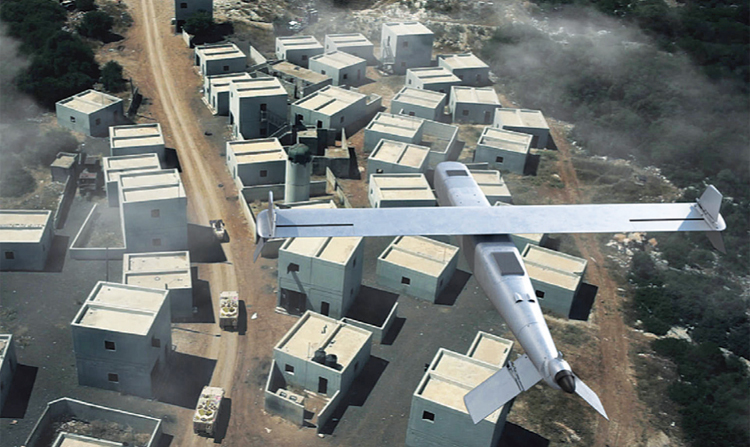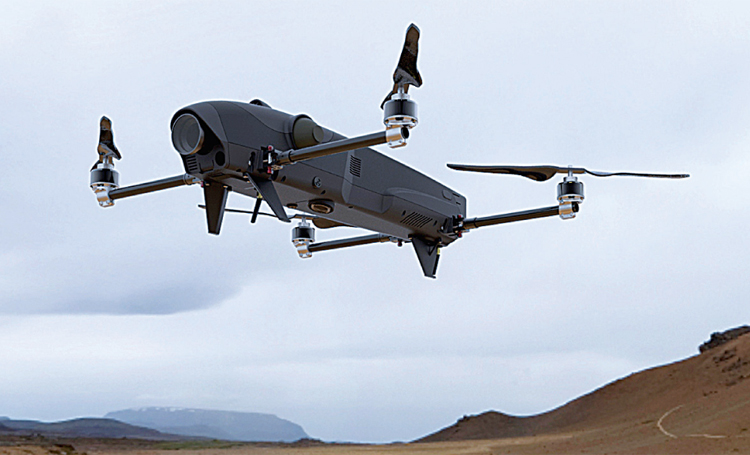INDIAN ARMED FORCES CHIEFS ON
OUR RELENTLESS AND FOCUSED PUBLISHING EFFORTS

SP Guide Publications puts forth a well compiled articulation of issues, pursuits and accomplishments of the Indian Army, over the years

I am confident that SP Guide Publications would continue to inform, inspire and influence.

My compliments to SP Guide Publications for informative and credible reportage on contemporary aerospace issues over the past six decades.
- Interim Defence Budget 2024-25 — An Analysis
- Union Defence budget 2024
- Indian Army: In quest of greater firepower and policy recommendations for gaps
- Indian Army Annual Press Conference 2024
- 6G will transform military-industrial applications
- Tata Boeing Aerospace Delivers 250 AH-64 Apache Fuselages, Manufactured in India
Loitering Munitions - Meeting the Challenge of Time-Sensitive Targets

In modern battlefields, spotting the enemy in time and acting on realtime information has become a critical capability. The precise location of the enemy in modern combat is not always known, even if the general area of their activities is.
Persistent surveillance of a broad area, timely detection, and quick engagement of the enemy, immediately upon a target emerges are imperative to dominate the modern battlespace. Such missions are the specialty of Israel Aerospace Industries (IAI) loitering munitions.
These weapons are designed to operate in complex arenas and to detect moving targets on foot or in a vehicle immediately. Having a loitering munition in the sky with the right sensors is the most efficient way to deal with such adversaries.
IAI’s family of loitering munitions is the ideal match for the time-critical, elusive, and evasive fleeting enemy targets of the modern battlefield. These loitering munitions resemble an alert hunter on the prowl, patiently watches, and waits for its target to reveal itself, then pounces just at the right time.

Loitering munitions can stay in the relevant area of combat operations for an extended time, and use sensitive electrooptic or anti-radiation sensors to cover and acquire an entire area in which enemy activity is known to be happening.
Ground forces can operate loitering munitions from a distance, further back behind the frontline, or operate them on the frontline, using portable tablet-based controls.
A Legacy of Loitering Munitions
In the 1980s, IAI pioneered the loitering munitions field with its development of the Harpy platform, as a method to overcome intelligence gaps on enemy activity.
Later, the larger Harop platform was born. In recent years, IAI has continued to act as a trailblazer in the area, introducing several loitering platforms that serve the tactical level.
Among others These include the electrically-powered Mini Harpy, equipped with dual-homing capabilities - utilizing antiradiation and electro-optical seekers.
Weighing 40 kilograms, the Mini Harpy is vehicle-lunched, like the Harop. With a broadened capability spectrum, Mini Harpy can utilize all sensors simultaneously. By employing the radiation-sensors, day, and night electro-optics sensors at the same time, Mini Harpy enables the user to cover broader areas, and look for targets more effectively, rather than searching for them through a straw. With the anti-radiation sensor cueing the camera on-board. The Mini Harpy carries a warhead with eight kilograms of explosives. It can strike targets within one-meter accuracy. Its operating range is 100 kilometers, enabling ground units to extend operations deeper into a hostile area or employ offensive weapons from far back if needed.

IAI’s Rotem quadcopter munition is the second tactical loitering solution offered by IAI, designed for employment by the ground forces and the individual soldier at the small unit level. With a range of 10 kilometers, it is relevant for units up to the battalion level.
Lightweight, compact, and affordable, Rotem enables individual soldiers to put eyes in the sky over the next hill, beyond the line of sight, and strike the enemy as soon as targets appear.
The Rotem provides tactical field units with a new advantage against adversaries. If it does not receive an attack authorization, the Rotem can fly back and retrieved safely, have its battery replaced, and immediately deploy on a new mission. It carries electro-optical day and night sensors.
IAI’s loitering munitions don’t just hover in the sky. Like alert hunters, they ensure that ground forces are monitoring the right area, waiting to detect and pounce on targets as soon as they appear. By empowering the tactical and operational level, Loitering munitions enable ground forces and special operations elements to arrive at the battlefield with game-changing advantage, by overcoming intelligence gaps and dealing effectively with the elusive ‘disappearing’ enemy.’





